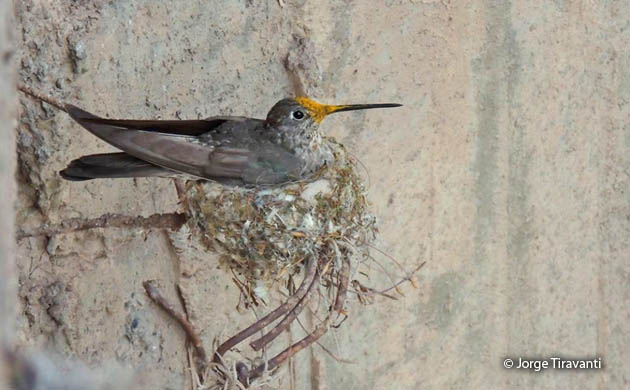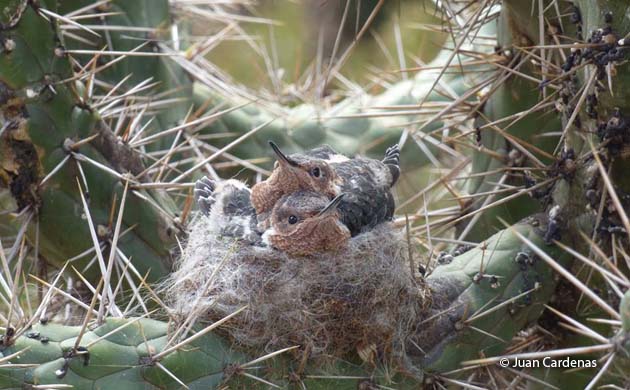
Nest predation is the driving force of nest site selection by bird. Generally the more exposed the egg are, the more hidden or camouflaged the nest should be.
Giant Hummingbirds build cup-shaped nests where eggs are exposed, but rather than hiding or camouflaging the nest, the biggest of all hummers generally places its nest in cacti. The long, sharp, and barbed thorns discourage rats and other small mammals from climbing the cacti to reach the eggs and chicks. Other birds can also be nest predators, but Giant Hummingbirds are relentless at attacking them in the air when they perceive them as threat.
My friend Jorge Tiravanti snapped the fetured photo of a female Giant Hummingbird nesting on rebars sticking out of concrete bridge wall in Cusco, Peru. The rebars made for a nesting site for this mother hummingbird. If small mammal predators are a worry for a mother hummingbird, the tall vertical wall and rushing water at the bottom of it would nearly ensure that no mammal can reach the nest. The only risky stage would come later when the chicks are left alone in the nest while the mother goes foraging for food (female hummingbirds brood and take care of the chicks alone) .

Giant Hummingbird nest and chicks. Photo: Juan Cardenas
If one compares the traditional cacti nesting site with the rebar nest on the bridge wall, the cacti site appears to provide better protection when chicks are left alone. The safest way to reach a nest in a cactus and avoid being impaled is by hovering over it and perform a smooth vertical descent and landing on the nest. Hummingbirds are suited to do this. Without the protection of thorns, baby hummingbirds are vulnerable on the rebar nest. Any predator could snatch the chicks when they are left unguarded. While the nesting location chosen by this mother Giant Hummingbird is interesting, a more traditional nesting site might have been safer.













Leave a Comment